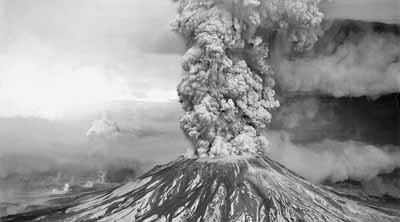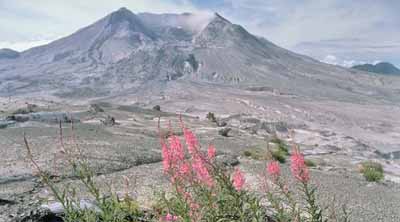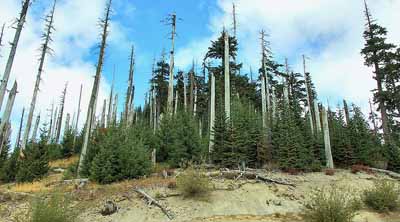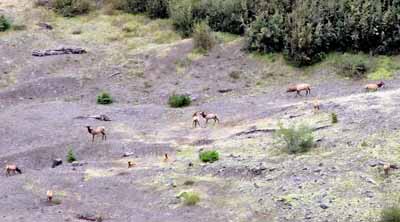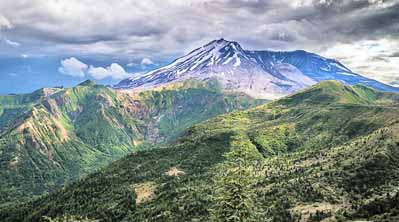What Shapes the Forest?
Forests change constantly. Disturbances shape forests by the way they kill or damage trees, what they leave behind, and how forests recover. Change may result from the subtle, slow, and continuous processes of natural growth and death of vegetation. Alternatively, changes may be caused by disturbance events that vary in terms of their magnitude, frequency, and spatial pattern. The magnitude of an event relates to how much of the forest canopy has been removed. Major disturbances remove or kill all the existing trees, while minor disturbances leave many trees alive. The frequency of disturbance varies widely by event type. Volcanoes erupt, expand, and erode over thousands or millions of years; major rivers flood several times a century; devastating hurricanes hit land every decade or so; and hundreds of lightning strikes start fires every year. Different disturbances result in diverse spatial patterns—from scattered individual trees killed by disease, to clumps and patches of trees killed by fire, to large expanses of forest converted to suburbs. The combination of magnitude, frequency and pattern dictate how disturbance events shape forests and how forests respond.
Natural disturbances (such as fire, wind, flooding, insects, diseases, and invasion of non-native species) are an integral part of the life cycle of forests. Dry forest conditions, plentiful fuel, high winds, and an ignition source can lead to large fires. Old trees weakened by lengthy drought may be more susceptible to insect and disease outbreaks. People may play a role in “natural” disturbances by providing triggers, the unattended campfire or transport of an invasive species, or by lengthening natural disturbance cycles such as fire. Natural disturbance patterns are often cyclical and some forests may return to their pre-disturbance composition after a period of time.
